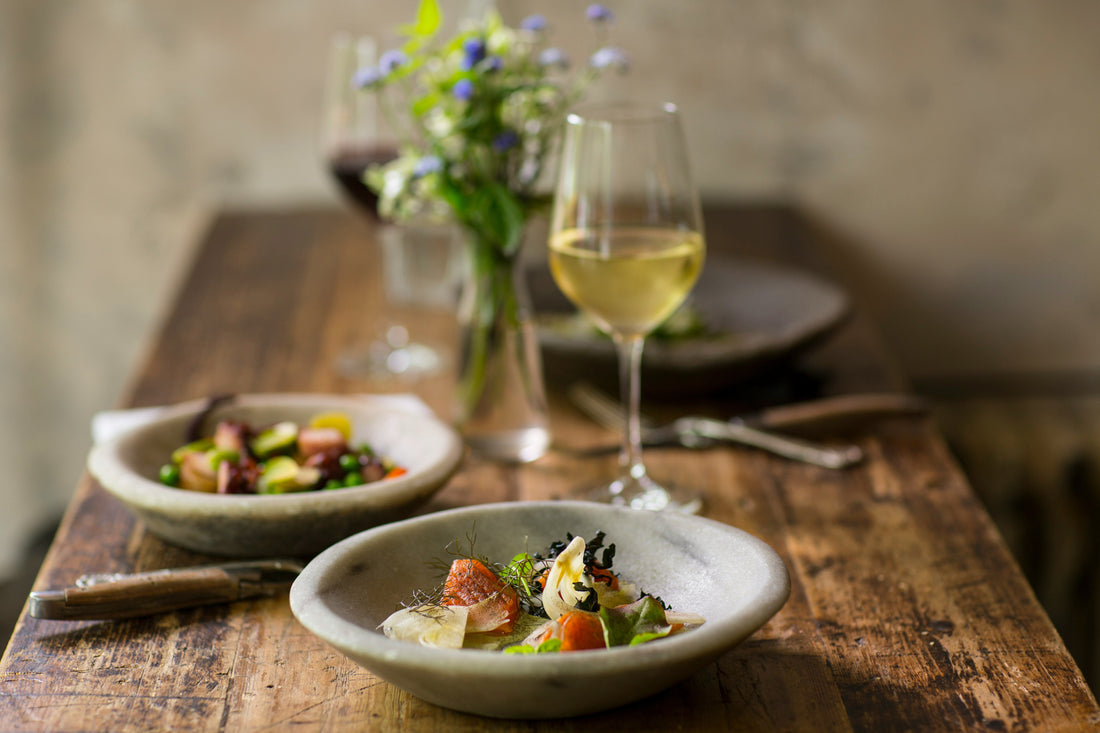
The Ultimate Guide to Wine Pairing: What to Serve with Your Favourite Dishes
Share
Wine pairing can seem like an art form, but it’s one that anyone can master with a little knowledge and experimentation. Whether you're hosting a dinner party, enjoying a quiet meal at home, or simply looking to enhance your favourite dishes, the right wine can elevate the entire experience. But with so many wines and dishes to choose from, how do you know which one goes with what? In this ultimate guide, we’ll walk you through the basics of wine pairing and give you some expert tips on what to serve with your favourite foods.
Understanding the Basics of Wine Pairing
Wine pairing is all about balance. The goal is to match the flavours, textures, and aromas of the wine with the dish you're serving, enhancing both the food and the drink. Generally, there are a few key principles to keep in mind:
- Weight: Lighter wines, like a crisp white, go well with lighter dishes, while heavier wines, like a full-bodied red, pair better with richer, more robust foods.
- Acidity: Wines with higher acidity (like Sauvignon Blanc or Pinot Noir) can cut through rich, fatty dishes, while wines with lower acidity (like a smooth Merlot) work better with milder foods.
- Tannins: Tannins, found mostly in red wines, can add a slight bitterness. Pair tannic wines with fatty meats or cheeses to balance the bitterness with the richness of the food.
- Sweetness: Sweet wines, like Riesling or Moscato, are great with spicy dishes as they complement the heat and add contrast to the flavours.
Now that you have a basic understanding of wine pairing principles, let’s dive into some common food and wine pairings to help guide your next meal.
1. Pairing Wine with Cheese
Cheese and wine are a classic combination, but not all cheeses are created equal when it comes to wine. Here are some of the best pairings:
- Brie or Camembert (Soft Cheese): Pair with a Chardonnay or Champagne. The creamy texture of these cheeses pairs perfectly with the crispness and acidity of Chardonnay, while the effervescence of Champagne cuts through the richness of the cheese.
- Cheddar (Hard Cheese): Try a bold red like Cabernet Sauvignon or a Zinfandel. The tannins in these wines balance the sharpness and richness of mature Cheddar.
- Goat Cheese: A Sauvignon Blanc or a light, citrusy white works wonderfully with goat cheese. The acidity and freshness complement the tanginess of the cheese.
- Blue Cheese: Go for a sweet wine like Port or Sauternes. The sweetness balances the strong, savoury flavour of the blue cheese.
2. Wine Pairing with Meat Dishes
The type of meat you’re serving plays a big role in determining the best wine. Here’s a quick guide for pairing wine with popular meat dishes:
- Beef (Steak, Roasts, etc.): Full-bodied reds like Cabernet Sauvignon, Malbec, or Shiraz are perfect choices. Their tannins and deep, rich flavours complement the bold flavours of beef.
- Lamb: A red wine like Merlot or Bordeaux pairs beautifully with lamb. The subtle earthiness of lamb works well with these wines, which are smooth and balanced.
- Pork: If you’re serving roasted or grilled pork, a Pinot Noir or Chardonnay is an excellent option. Pinot Noir’s light body complements the mild flavour of the pork, while the acidity of Chardonnay works well with roasted pork dishes.
- Chicken: For roasted or grilled chicken, a Sauvignon Blanc or Chardonnay is ideal. Lighter wines with acidity balance the delicate flavours of chicken without overpowering them. For more flavourful dishes like chicken with a rich sauce, a medium-bodied red like Pinot Noir works well.
3. Wine Pairing with Fish and Seafood
While many people reach for white wine when pairing with seafood, some red wines can work beautifully, too. Here’s a breakdown:
- Salmon: This oily fish pairs well with both white and red wines. A Pinot Noir is a fantastic choice, offering a light, fruity profile that complements the richness of the salmon. If you prefer white wine, try a Chardonnay or Sauvignon Blanc for their fresh acidity.
- Shellfish (Lobster, Crab, Shrimp): Chablis, a dry white wine made from Chardonnay grapes, is a classic pairing. The minerality of Chablis enhances the sweetness of shellfish. Alternatively, a Vermentino or Albariño are great lighter white wines that work well with seafood dishes.
- White Fish (Cod, Halibut, etc.): For delicate white fish, a crisp Pinot Grigio or a dry Riesling enhances the light flavours of the fish without overwhelming them.
4. Wine Pairing with Pasta Dishes
Pasta dishes can range from light and simple to rich and hearty, so the right wine depends largely on the sauce you’re using:
- Pasta with Tomato-Based Sauces (Bolognese, Marinara, etc.): Rich, red wines like Chianti, Sangiovese, or Zinfandel are a great match for tomato-based pasta dishes. The acidity in the wine complements the acidity in the tomatoes.
- Pasta with Cream Sauces (Alfredo, Carbonara, etc.): A fuller-bodied white like Chardonnay works well with creamy pasta dishes. The richness of the wine mirrors the creamy texture of the sauce, enhancing the overall flavour.
- Pasta with Pesto: For pesto-based pasta, a Sauvignon Blanc or Vermentino is ideal. These wines offer fresh, herbaceous notes that complement the basil in the pesto.
5. Wine Pairing with Spicy Food
Spicy dishes, like Indian or Thai cuisine, need a wine that can balance the heat while enhancing the complex flavours. Here are some recommendations:
- Thai or Indian Spicy Dishes: A Riesling or Gewürztraminer with a touch of sweetness works wonders with spicy foods. The sweetness of these wines helps tone down the heat while enhancing the spices.
- Mexican Cuisine (Tacos, Enchiladas, etc.): A Rosé or Zinfandel pairs well with the bold flavours of Mexican food, offering fruity notes that complement the spice without overwhelming the palate.
6. Wine Pairing with Desserts
When it comes to dessert, the wine should either be sweeter or complement the dessert’s richness. Here are some great dessert wine pairings:
- Chocolate Desserts (Brownies, Mousse, etc.): A Port or Shiraz is a classic match for chocolate desserts. The rich, velvety texture of these wines pairs perfectly with the deep flavours of chocolate.
- Fruit-Based Desserts (Tarts, Sorbet, etc.): A Moscato d’Asti or a Prosecco is ideal. The bubbles and sweetness of these wines balance the acidity and sweetness of fruit desserts.
- Cheese Platters: If you're serving a cheese board with nuts and dried fruits, a Late Harvest Riesling or a Sauternes provides a sweet contrast to the salty cheeses.
Final Thoughts
Wine pairing doesn’t need to be intimidating. The most important rule is to experiment and have fun with it. There are no hard and fast rules—just a few guidelines to help enhance your dining experience. Start by exploring different combinations, and soon you’ll find the perfect pairings for your favourite dishes.
At Wine Haven, we offer a carefully curated selection of wines that are perfect for pairing with any meal. Explore our range today, and let us help you discover the ideal wine for your next culinary adventure!
